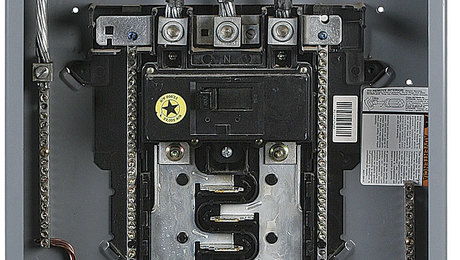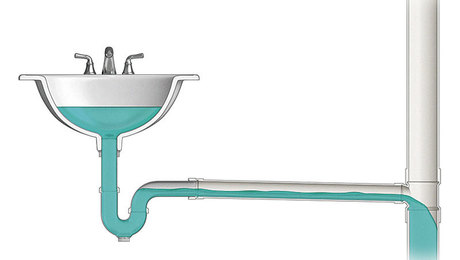How it Works: Historic Designations
When a contractor hears the words “historic property,” he or she may worry about more than having to deal with asbestos or lead paint. It’s often assumed that properties identified as historic are subject to strict protections that limit or rule out alterations (see “How to Save an Old House,” FHB #237).
The fact is that few historic designations carry any legal force to dictate what’s done with a property; the most well-known, the National Register of Historic Places, has almost no regulatory teeth at all. On the other hand, the plaque that marks your house as significant could open the door to tax advantages and perhaps even grants or loans to help finance improvements. There’s another bonus as well: Nationwide studies indicate that properties within designated historic districts gain market value more steadily than other homes.
Properties can be identified as historic at the national, state, or local level. These designations may overlap, and they often share similar criteria for inclusion. Here’s how they work.
National Designations
The National Register of Historic Places is the nation’s official list of more than 80,000 properties deemed worthy of preservation. Administered by the National Park Service, the national register recognizes buildings for their architecture or their association with people or events influential in national, state, or local history. Age (a property generally must be older than 50 years) and historic integrity are also considered. National-register districts identify geographic areas with a significant concentration of historical elements; properties within the district are identified as “contributing” or “noncontributing” to district integrity. National historic landmark status is conferred only on properties having exceptional national significance, and they account for only 2400 properties listed in the national register.
Getting listed: Properties are nominated by their owners or others (such as a local preservation organization) through their state’s historic-preservation office (SHPO). The SHPO solicits public comment, reviews the application, and submits a recommendation to the National Park Service, which makes the final determination. The process can take a year or more. Landmark status requires further federal study and approval by the secretary of the interior.
Benefits: Listing is required for obtaining federal rehabilitation tax credits, which currently are limited to income-producing properties; it’s also required for some state benefits. There are no restrictions on alterations to a listed property unless federal money or permits are involved. The in-depth investigation of the house’s structure and history required by the application is valuable itself in guiding renovation and preservation efforts. Listing may have a beneficial impact on property value.
Caveats: Listing takes time and effort, with limited financial reward (at least currently) at the federal level. Eligibility for federal incentives requires adherence to specific standards for rehabilitation. If you want a plaque, you have to buy it yourself.
State Designations
State historic registers identify properties of local or regional significance. These properties often also appear on the national register. Likewise, state registers carry no power to regulate alterations to listed structures.
Getting listed: States often use the same criteria and nomination process (and the same forms) as those used for the national register.
Benefits: Thirty-one states offer income-tax credits (many available to homeowners) of 20% to 30% of the rehabilitation cost of historic structures. Other benefits may include grants or loans, favorable tax treatment, or technical assistance at the state level.
Caveats: Listing does not guarantee benefits, which may require adherence to federal rehabilitation standards.
Local Designations
Inclusion in a local historic district carries the most protection—or, depending on your viewpoint, the most restrictions. State law typically governs the establishment of local historic authorities as well as the degree of power those bodies have over district properties. Many local districts are based on national-register districts, but the implications involved in local districts are different.
Getting listed: Although procedures vary by state, local districts typically start with the appointment of a study group to research an area’s architectural or historic significance. This is followed by a review by local and state authorities, a public hearing, and approval by district property owners. A commission is formed to administer the district.
Benefits: Municipalities, especially large ones, may offer rehabilitation grants or loans to owners of houses in historic districts, along with technical assistance, property-tax freezes, and flexibility in meeting building codes. Studies show that property values are more stable and tend to rise in local districts, and neighborhood character is maintained. Local districts are also credited with boosting tourism, encouraging walkable neighborhoods, and promoting a community dialogue on design. Requiring contractors to “repair rather than replace” creates jobs and encourages craftsmanship.
Caveats: Certain alterations to structures in a historic district may require a certificate of appropriateness from the local historic commission or zoning department; others do not.
But can I paint my house pink?

In a local historic district, alterations to structures usually require approval from local authorities. Not all changes are subject to review, however. Here are examples of what historic commissions typically care about, and what they don’t.
Typically subject to review
- Replacement of windows, doors, or siding, particularly involving a material change, such as replacing wood clapboards with vinyl
- Significant architectural alterations to the exterior that are visible to the public
- Additions, outbuildings, and fences
- Demolition
- Change in roofing materials
Typically not subject to review
- Interior improvements
- Routine maintenance and repairs
- Paint colors
- Change of use
- Alterations to noncontributing structures
- Landscaping
Photos: courtesy of Erie Landmark Company; Drawing: William Godfrey
Fine Homebuilding Recommended Products
Fine Homebuilding receives a commission for items purchased through links on this site, including Amazon Associates and other affiliate advertising programs.

8067 All-Weather Flashing Tape

Affordable IR Camera

Handy Heat Gun



























